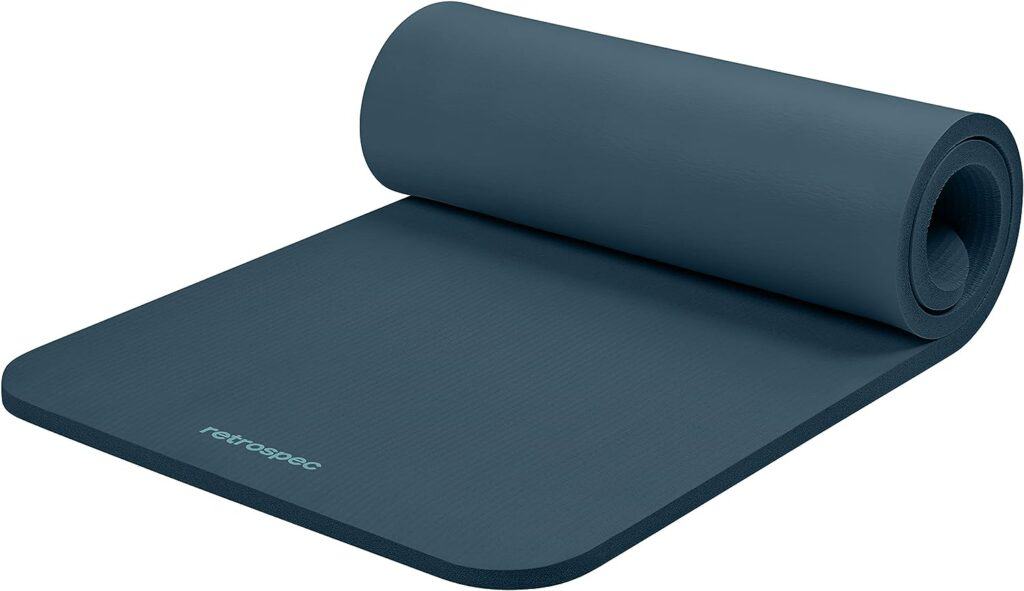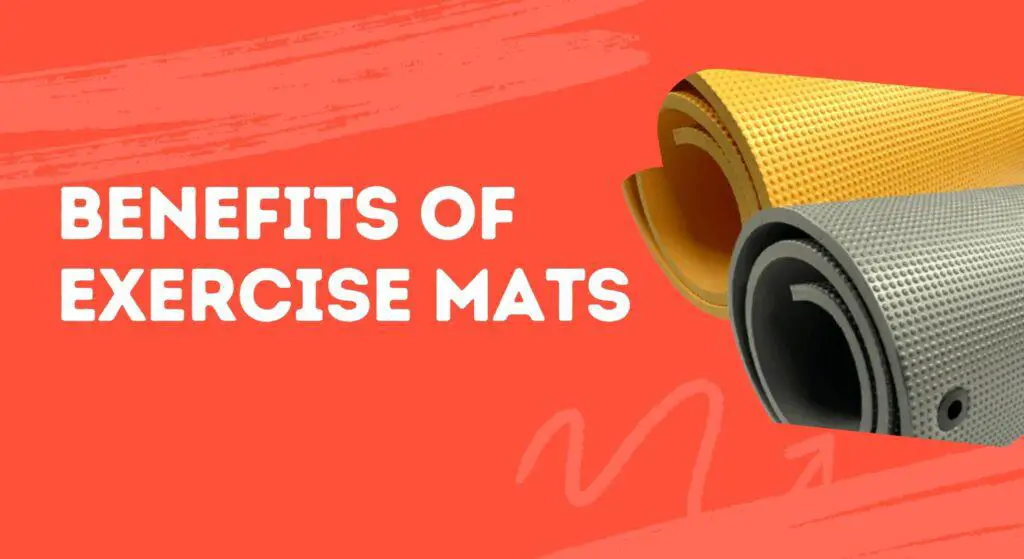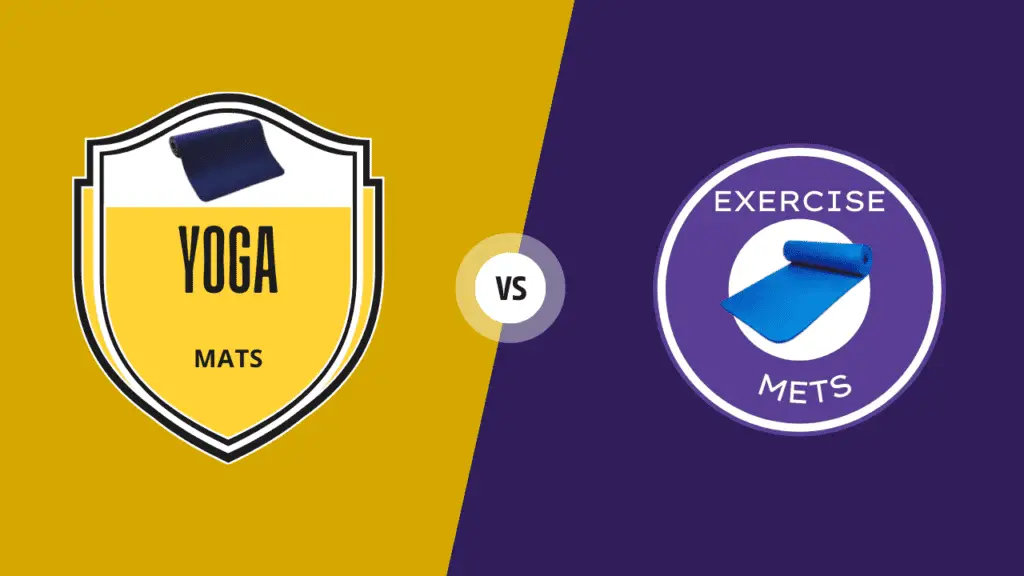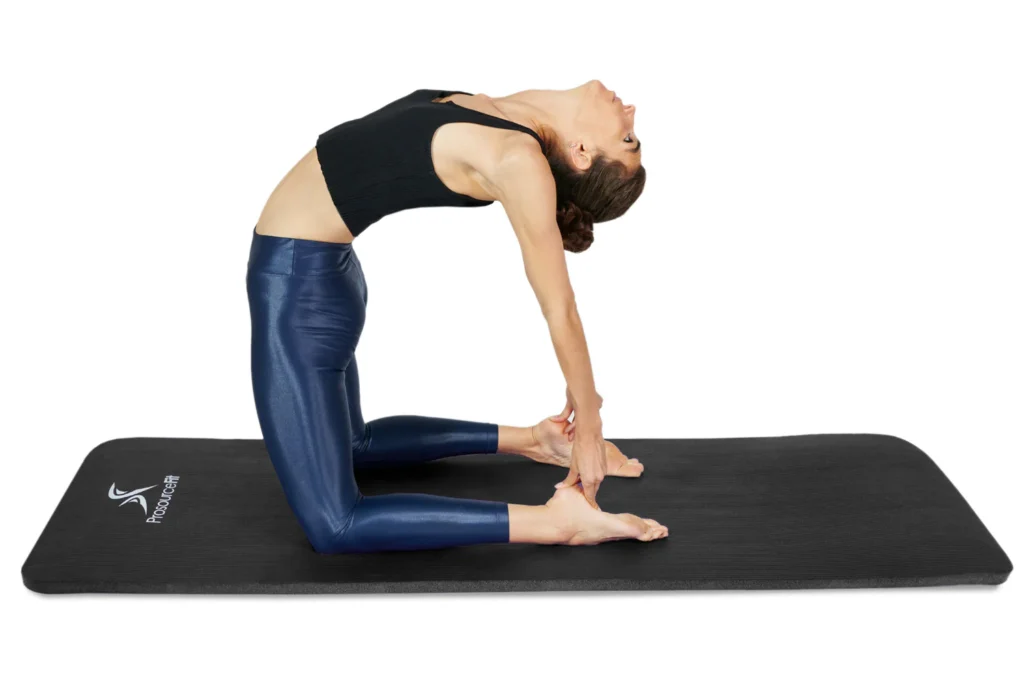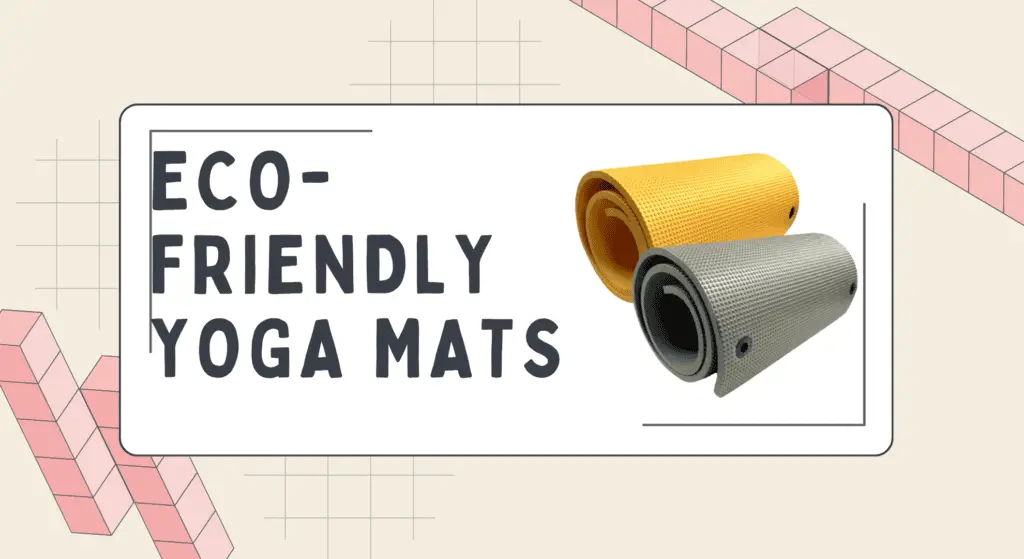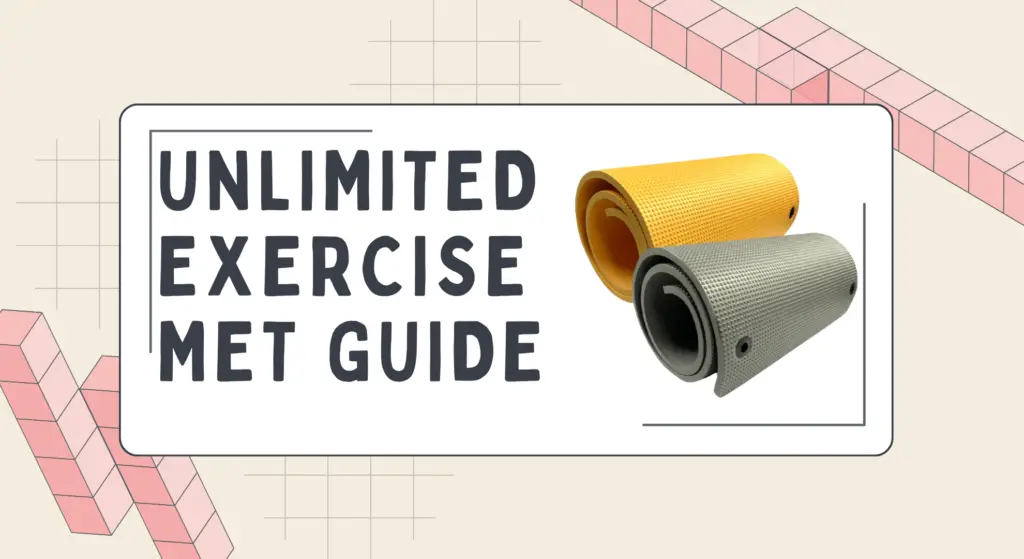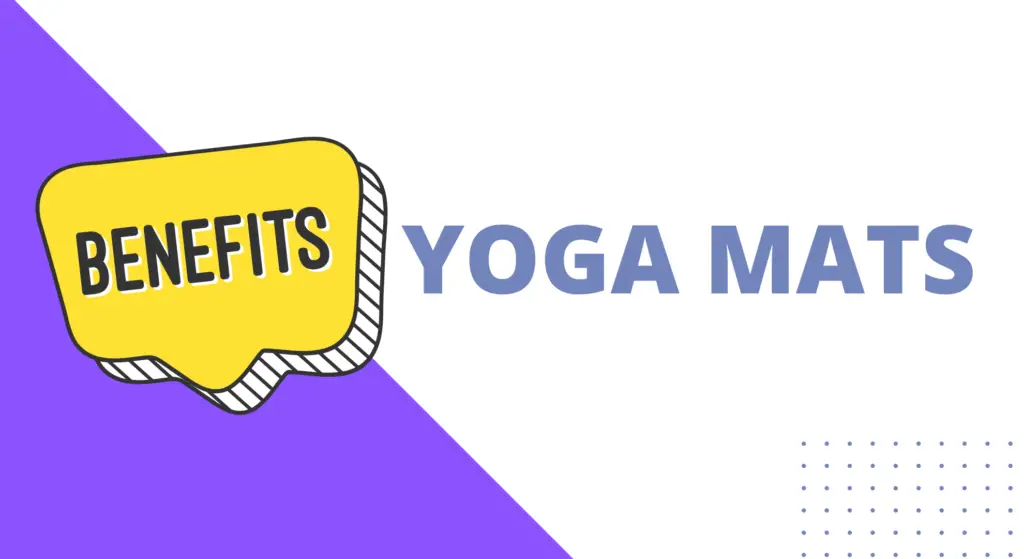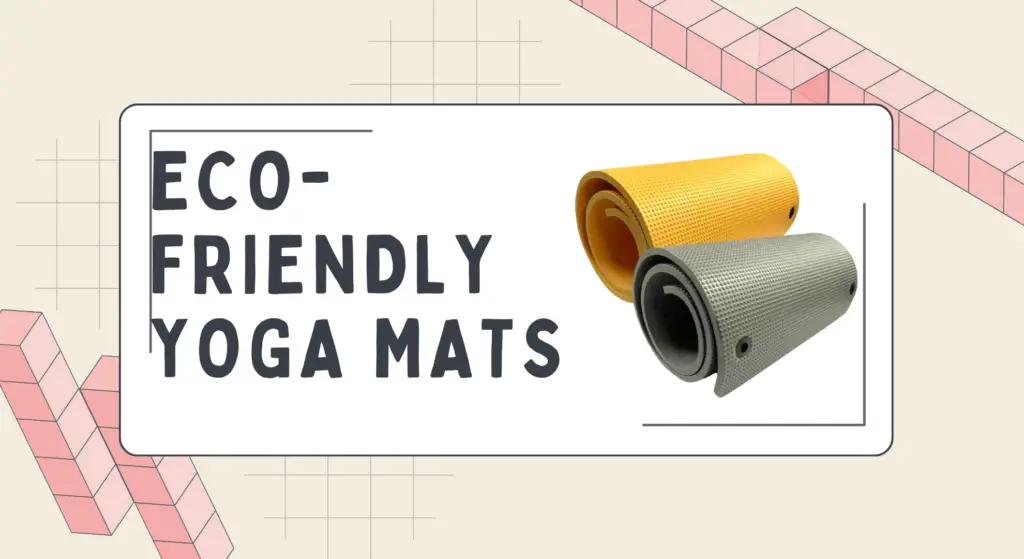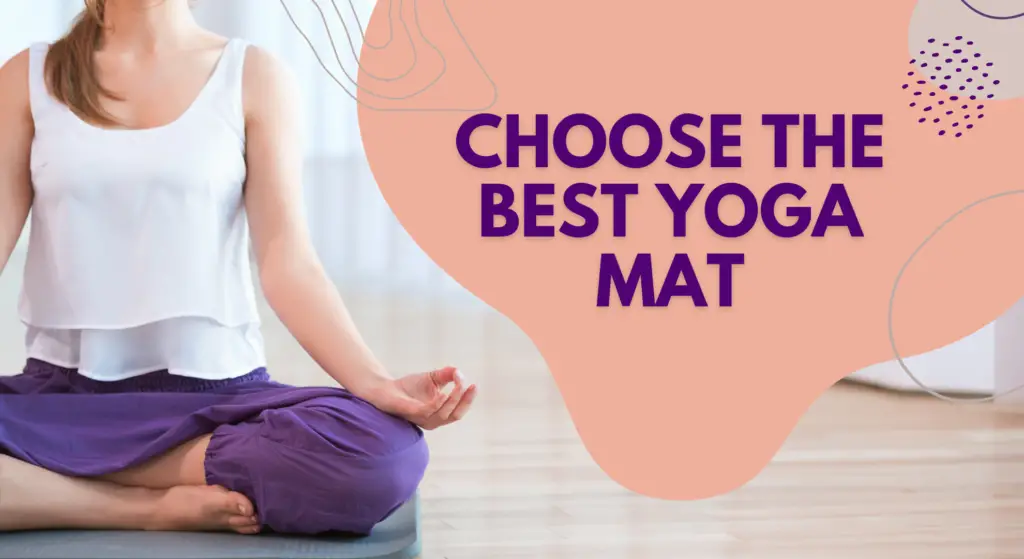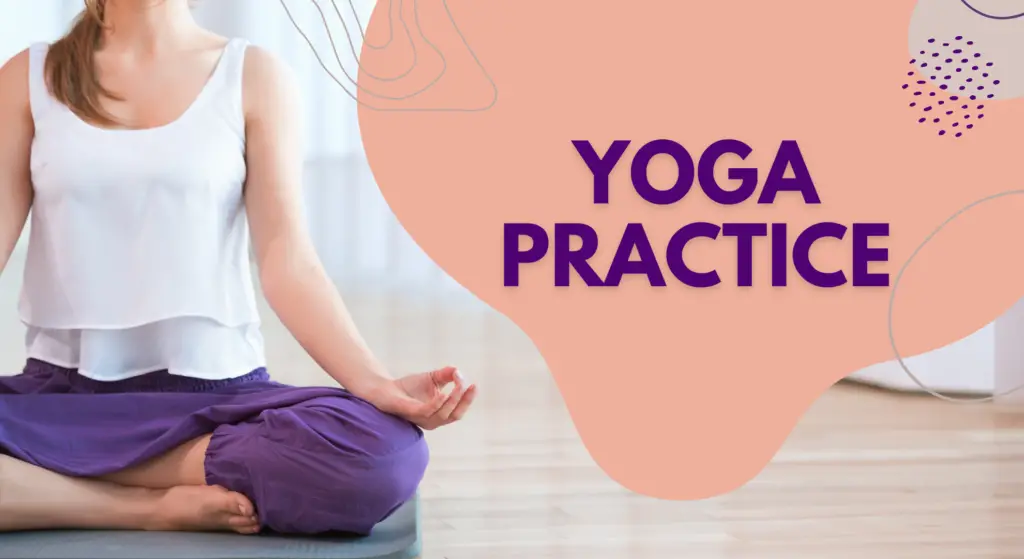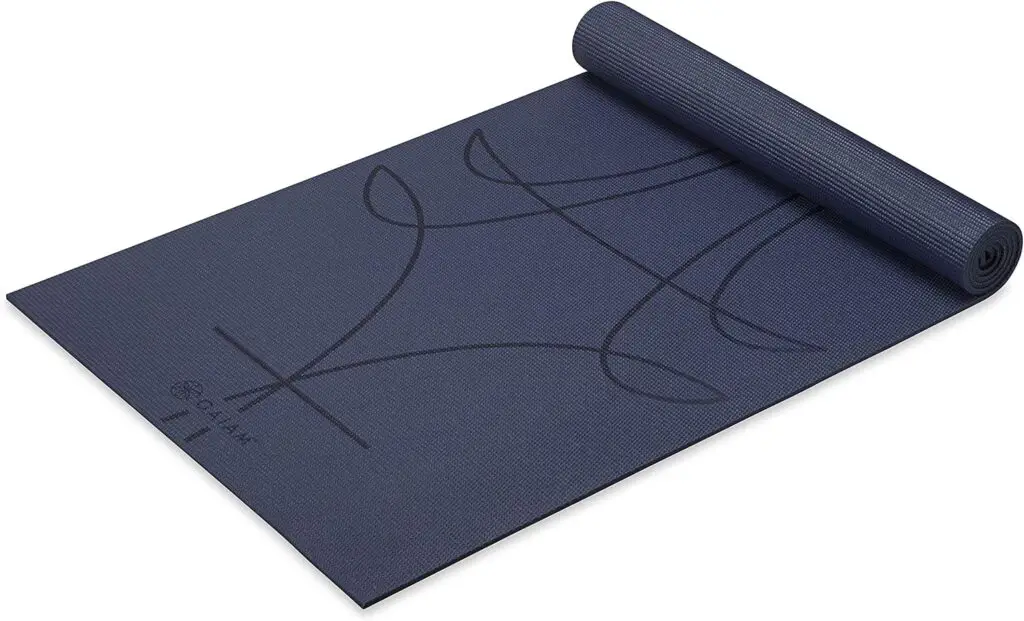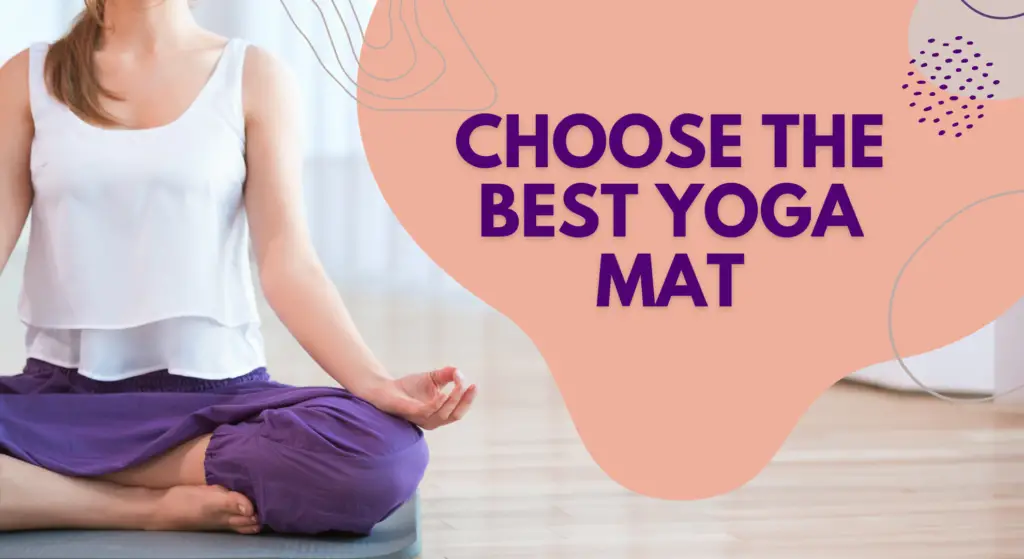Exercise mats are an essential accessory for any home gym. With the rising popularity of at-home workouts, people are recognizing the importance of having the right mat to meet their fitness needs. Whether you love yoga, hit the peloton every day, or are looking to cushion your joints during bodyweight exercises, the types of exercise mats you use can impact comfort, safety and performance.
This guide will explore the key types of exercise mats available, their intended uses, materials, thickness, texture options and care recommendations. Let’s review the main categories of mats to consider:
Yoga Mats:
Yoga mats dominate the exercise mat market, designed specifically to meet the needs of yogis. Typical yoga mat materials include:
- PVC – Durable but not eco-friendly
- Rubber – Grippy, supportive and recyclable
- Cotton – Lightweight with grip when wet from sweat
- Foam – Cushioned but less stable
Each material has unique pros and cons. Key factors are density, grip texture, size and thickness. Standard yoga mats are about 1/4 inch thick but extra thick options up to 1/2 inch provide more cushion for sensitive joints. Well-known yoga mat brands to consider include Manduka, Jade Yoga and Liforme.
Whether you practice vinyasa flow or relax into restorative poses, a good yoga mat provides an essential foundation.
“Having the proper yoga mat completely transformed my practice. The extra cushion and support relieved pain I used to feel on thin, cheap mats. Splurging on a high quality mat was absolutely worth it for better alignment and comfort.” ~ Ali K., Yoga Instructor
Gym Flooring Mats:

Gyms require specialized flooring to withstand heavy equipment and keep floors protected. Thick foam or rubber rollout gym mats cover large areas for zone training, machines, and high impact classes. Key features include:
- Interlocking tile design
- Waterproof layer
- 1/2 inch minimum thickness
- High density foam base
Durable gym flooring mats prevent injury from falls and work well for home garage gyms. Popular styles are puzzle piece foam mats or heavy rollout rubber mats taped together to customize sizing. Gym flooring mats provide exceptional padding for hardcore athletes.
Equipment Mats
Every piece of gym equipment deserves its own protective mat. Bench and rack mats are must-haves for strength training stability. Treadmill mats, elliptical mats and exercise bike mats absorb vibration and prevent floor damage from cardio machines. Features to look for include:
- Made of thick 1/2+ inch durable rubber
- Soften noise from dropping weights
- Sized to fit specific equipment
Having the right fitness machine mat improves performance and safety. No one wants shaky machines interfering with PR attempts!
Table: Matching Exercise Equipment to Mat Type
| Equipment | Mat Type | Why it Matters |
| Treadmill | Treadmill Mat | Absorbs impact and prevents floor damage |
| Elliptical | Elliptical Machine Mat | Creates stability and reduces machine vibration |
| Exercise Bike | Exercise Bike Mat | Cushions vibration and prevents rust from sweat dripping |
Discover Your Path: Before Read this article after you will move to next article
#1. 12 Benefits of Exercise Mats-Comfort, Safety & Performance
#2. Key Differences Between Yoga Mats and Exercise Mats
High Intensity Interval Training Mats
High intensity functional training like CrossFit demands hardcore mats that take abuse. With intense cardio and weights combined, these HIIT mats need extra impact protection, easy cleaning, and durability including:
- Thick 1/2+ inch padding
- Waterproof layer
- Antimicrobial materials
- Textured grip top layer
Whether racing through burpees or lifting heavy, HIIT mats support demanding multi-plane movements. They provide essential cushion and traction for high intensity exercise.
Density, Thickness & Grip
Exercise mat density, thickness and surface texture determine comfort and stability needs based on your workout style.
Mat Density
From lightweight yoga to heavy rubber flooring, exercise mat density is measured in pounds per cubic foot (PCF).
- Low density mats = 2-3 PCF
- Medium density mats over 3-4 PCF
- High density mats exceed 4+ PCF
Higher density mats are firmer and more supportive. Low density materials have more cushion but compress over time. Choose density based on your comfort needs.
Mat Thickness
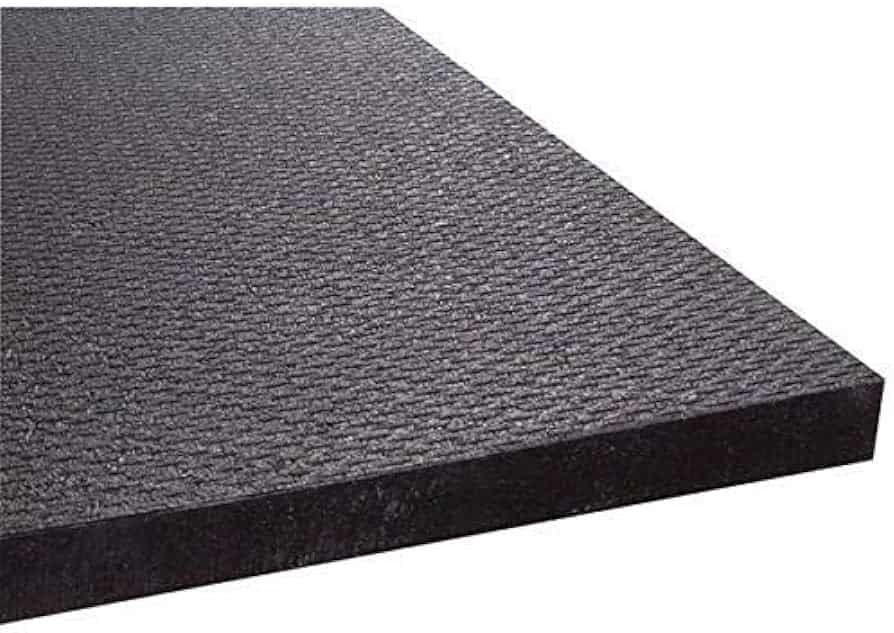
Standard fitness mats are 1/4 inch thick but range to over 1 inch for extreme padding.
- Standard mat thickness = 1/4 inch
- Extra thick mats = 1/2 inch +
Joint-friendly flooring for seniors or restorative yoga requires extra thick material. Just a 1/4 inch fitness mat works fine for most exercise.
Textured Grip
The best workout mat textures prevent sliding with grippy top layers.
- Smooth mat surfaces allow hands and feet to slide
- Textured mats provide traction for yoga poses, plyometrics and floor exercises using added:
- Rubber grip dots
- Polyurethane designs
- Embossed patterns
- Surface bumps
Mat Care Tips
Taking care of your exercise mat ensures longevity and prevents buildup of dirt, odors and bacteria.
- For yoga mats, avoid harsh cleaners that break down delicate materials over time. Use mild soap with essential oils or hydrogen peroxide mixes instead.
- Rubber gym mats can handle strong antimicrobial wipes and cleaners. Mop down regularly.
- Thoroughly dry mats after cleaning to prevent mold and mildew growth.
- Roll or stand mats vertically to air out when not in use to prevent odors.
- Replace mats displaying excessive wear, tears, permanent creasing or folding indicating materials are breaking down.
Conclusion
Choosing the right exercise mat enhances your workout comfort, safety and performance. Evaluate your fitness regimen and flooring needs to determine the best type of mat for you. Yoga practitioners need grip and dense cushion, while hardcore athletes require firm supportive antimicrobial flooring to withstand intense training. Optimizing your home gym with quality equipment mats also prevents damage and improves stability.
Invest in the proper exercise mat for your training style to get the most out of your workouts while preventing injury. Your joints will thank you later!
Additional Exercise Mat Options
While yoga mats, gym flooring, and equipment mats encompass the most common fitness mat categories, there are additional specialty mats to consider as well.
Outdoor Exercise Mats
Exercising outdoors provides the benefits of fresh air and nature, but it also exposes standard exercise mat materials to elements that can damage them. Using an outdoor mat allows you to work safely with padding that is weather-resistant. Key features include:
- Mold/mildew-resistant materials
- Does not retain heat from hot surfaces that could burn skin
- Provides cushion and grip on rough outdoor terrain
Popular outdoor workout locations include beaches, grass, outdoor tracks and parks. Having a durable grippy mat designed for stability outdoors makes exercise more comfortable and effective.
Agility Mats
Agility training for sports performance enhances quickness, coordination and balance. Agility ladder drills and plyometric box exercises demand mats that combine shock absorption and traction for fast direction changes in all planes. Must-have specs include:
- Textured non-slip surface
- Dense 1/2+ inch padding
- Large sizing to allow running strip patterns
Whether training for football, tennis or basketball, agility mats provide a safe workout surface for sprints, hops and box jumps. The combination of cushion and grip enables stability during even the quickest cuts and spins.
Exercise Mat Brand Comparison:
The wide range of fitness mats now available can make it hard to select the best one. Analyzing key brands and models makes it easier to compare based on customer reviews and value.
Table: Exercise Mat Brand Overview
| Brand | Best For | Price Range | Rating |
| Manduka | Yoga | $100-$200 | 4.6/5 |
| Jade Yoga | Eco-Friendly Yoga | $70-$100 | 4.7/5 |
| Stamina | Home Gym Flooring | $100-$300 | 4.5/5 |
| Gorilla Mats | Extreme Durability | $100-$150 | 4.8/5 |
As the table shows, specialty brands have carved out a niche with tailored exercise mat offerings superior to specific uses. Conduct research to identify which brand aligns closest to your fitness expectations based on material quality, padding, size, traction, weight and other priorities. Reading customer reviews also provides helpful insight.
Investing more upfront in a premium mat brand with proven performance ensures you receive the exact surface needed to support your training style while withstanding years of use. Don’t settle for generic mats that compress and slide over time. Pay attention to material quality standards that brands tout to justify higher prices and independent certifications that back brand claims.
Mat Maintenance Best Practices:
In addition to choosing the optimal exercise mat, properly caring for your mat helps it last. Here are pro tips for mat maintenance:
- Deep clean mats monthly using diluted gentle soap in cool water applied with a soft brush. Avoid abrasive cleansers.
- Sanitize after sickness using disinfectant wipes or sprays to prevent germ transfer. Let the solution soak first.
- Deodorize as needed between washes with baking soda or vinegar soak if odors develop.
- Alternate workout shoes that transfer dirt and oils that are embedded in the mat texture. Rotate cross trainers and clean mats more frequently.
- Smooth wrinkles by storing the mat rolled up or hanging it vertically. Even foam can develop permanent creases over time.
Establish a fitness mat care routine based on your workout frequency. Built-up sweat, body oils, and dirt weaken materials, shorten usable lifespan, and require deeper scrubbing to remove stains and odors. Stay consistent with gentle cleaning, alternating workout gear, and proper mat storage techniques for the longest quality performance.
The right exercise mat brings comfort, support, and durability to your training. Evaluate your fitness goals and surface needs, then invest in a high-quality mat option designed for your specific workout style. Follow expert care and maintenance best practices so your mat provides a stable, slip-resistant layer perfect for getting fit at home for years to come.
